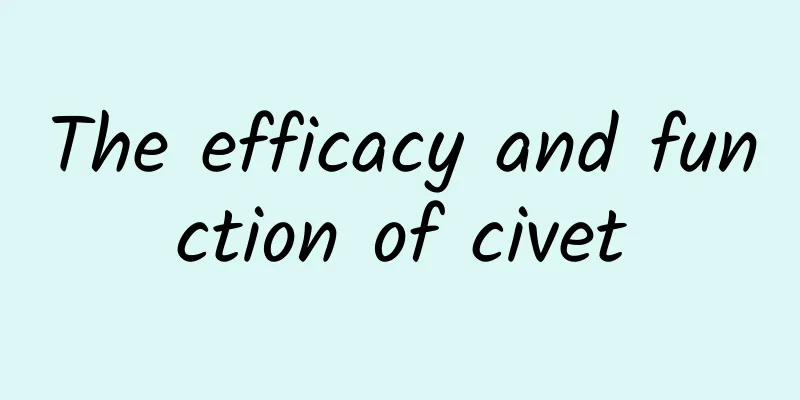Paper straws forced me to quit even drinking milk tea. Who among my family members understands me?

|
What can make young people quit drinking coffee? You think it's the sauce latte? Wrong! It's a small paper straw, my friends! The paper tape that has been soaked in the mouth, the paper stained with coffee... the coffee in your hand instantly loses its fragrance! Image taken from social media On New Year's Day 2021, the most stringent upgraded version of the "plastic restriction order" in history was officially implemented. Since then, the catering industry across the country is no longer allowed to use non-degradable disposable plastic straws. In this way, the "difficult to use" paper straws came out with the label of "environmentally friendly and safe". But are they really more environmentally friendly and safer than plastic straws? Let's talk about it today~ Are paper straws really safer than plastic straws? Many people think that using paper straws to replace plastic straws is good because it is environmentally friendly and safe. In fact, paper straws also have safety risks. Image source: unsplash, Photographer: Meghan Rodgers A recent Belgian study tested 39 brands of straws from restaurants and retailers and found that most contained chemicals called polyfluoroalkyl substances (PFAS). PFAS is a chemical raw material that can be used to make a variety of daily products such as outdoor clothing and non-stick pans. It is waterproof, heat-resistant and stain-resistant. However, it has potential hazards to humans, animals and the environment, such as causing thyroid disease, increased cholesterol levels, liver damage and increased risk of some cancers. It decomposes very slowly and can accumulate in the environment and exist for thousands of years, so it is called a "permanent chemical." The 39 different brands of straws tested were made of five materials: paper, bamboo, glass, stainless steel and plastic. The results showed that most brands (27, accounting for about 69%) contained PFAS, and a total of 18 different PFAS were detected. PFAS was detected in 90% of paper straws, 80% of bamboo straws, 75% of plastic straws and 40% of glass straws. Only 5 steel straws were not detected. It can be seen that paper straws are not necessarily safer than plastic straws. However, the concentration of PFAS detected is very low, and most people only use straws occasionally, so the risk to human health is limited. But here we need to remind everyone that when you buy milk tea or juice on the street and drink it with a straw, try not to ignore the possibility that harmful substances may enter the body through the straw! Paper straws are not so environmentally friendly, nor are they so useful Another important reason why many people use paper straws is that "paper straws are more environmentally friendly." In fact, paper straws are indeed more environmentally friendly than plastic straws, but they are not perfect. First of all, paper straws are more expensive. The use of paper straws not only wastes wood resources, but also produces a large amount of sewage. The production cost of paper straws is more than twice that of plastic straws. The cost of a plastic straw can be controlled at about 3 cents, while the cost of a paper straw is 10 cents, which is 3 times that of a plastic straw. Paper straws are made of paper, and during the production process, a large number of trees will be cut down, and there will also be problems such as sewage discharge, which will put a heavy burden on the environment. Moreover, many paper straws are not pure paper. There may be polyethylene or polypropylene plastic coatings on the inside, which cannot be completely degraded during the degradation process. Secondly, paper straws are not very user-friendly. Image taken from social media Paper straws will become soft and affect the taste if soaked in beverages for a long time. I think everyone who has used it should have experienced this. If you go to a physical milk tea shop and observe, you will find that if there are both paper straws and plastic straws on the counter, most people will still choose plastic ones. There have been reports in the UK that due to consumer complaints that paper straws are too soft, some businesses have had to make paper straws thicker and thicker, resulting in the straws being too thick to be recycled by recyclers even though the material is biodegradable. In the end, they had to switch back to plastic straws. In addition to paper straws, what other materials are straws made of? Currently, the most popular alternative to plastic straws on the market, apart from paper straws, are polylactic acid straws (i.e. PLA straws). PLA (Poly-Lactic Acid), also known as polylactic acid in Chinese, is made by saccharifying starch raw materials to obtain glucose, which is then fermented with glucose and certain bacteria to produce high-purity lactic acid, which is then synthesized through chemical synthesis to make straws. Common starch raw materials include corn and cassava. PLA is now the most widely used because of its excellent gloss and barrier properties, good biocompatibility, and biodegradability . However, PLA also has prominent disadvantages. It has poor heat resistance and insufficient toughness. It lacks flexibility and elasticity. Its thermal softening temperature is below 70°C. It is easily degraded and becomes brittle after being made into products. It cannot be used in hot liquids . In addition, there are some less popular options such as glass, stainless steel, and straws. Image source: unsplash Photographer: David Lalang But from the perspective of usage, plastic is still the most practical, which is why plastic straws were used before. It’s just that now due to environmental issues, we hope to reduce the use of plastic straws. Therefore, I personally recommend that you don’t use straws if you can avoid it! References [1] https://www.cnbeta.com.tw/articles/science/1380613.htm [2] Boisacq P, De Keuster M, Prinsen E, Jeong Y, Bervoets L, Eens M, Covaci A, Willems T, Groffen T. Assessment of poly- and perfluoroalkyl substances (PFAS) in commercially available drinking straws using targeted and suspect screening approaches. Food Addit Contam Part A Chem Anal Control Expo Risk Assess. 2023 Aug 24:1-12. doi: 10.1080/19440049.2023.2240908. Epub ahead of print. PMID: 37619405. [3] https://scjg.tj.gov.cn/tjsscjdglwyh_52651/hdpt/cjwtyxfts/202106/t20210601_5467414.html Planning and production Author: Ruan Guangfeng, Deputy Director of Kexin Food and Health Information Exchange Center Review | Zhong Kai, Researcher at the National Food Safety Risk Assessment Center Planning丨Yinuo Editor: Yinuo |
<<: Can ordinary people tell the difference between natural diamonds and artificial diamonds?
>>: What surprises will there be when samples from asteroid Bennu return?
Recommend
The efficacy and function of deer fetus
The effects and functions of deer placenta includ...
If you want to learn how to cook at home, please learn how to read recipes first!
Mixed Knowledge Specially designed to cure confus...
Wow, the miracle medicine for curing my mouth ulcers turned out to be cockroach water!
Audit expert: Mo Jianchu Professor, Institute of ...
The "constellations" composed of stars are not used for fortune-telling!
We already know that the sky is filled with twink...
Shocking news! The neck lump is actually a 40cm long parasite infection! Beware of these symptoms
Recently, the General Surgery Department II of Xi...
We were chatting happily, why did we start arguing?
Produced by: Science Popularization China Produce...
Fever, headache... This disease has symptoms similar to a cold, but can be fatal in severe cases! How to prevent it scientifically?
Recently, the news that two students from a middl...
The efficacy and function of turtle glue
We can often see turtle glue in daily life, so ho...
What are the benefits of drinking Gotu Kola water?
Gotu kola is a plant of the Morphological family ...
A distant relative of Tyrannosaurus Rex? Uncovering the secrets of a new member of the dinosaur family
This fall, a study of Labocania aguillonae , from...
Someone specializes in collecting human brains: Scientists uncover the mystery of gray matter
Leviathan Press: It is a sad fact that people who...
Xiamen’s specialty dried fish is actually a nationally protected species?
In 1774, German biologist Pallas collected a spec...
The efficacy and role of small leaf diphtheria
As a traditional Chinese medicine, the small-leav...
China Payment and Clearing Association: WeChat Pay will be more popular than Alipay in 2022, and 80% of mobile payment users earn less than 10,000 yuan per month
In order to fully and deeply understand the curre...
Still can't see clearly? It seems that the telescope should be upgraded
In 1609, astronomer Galileo built a 4.4cm telesco...









![[Popular Science of Chinese Military Technology] Why are helicopter engines so different from those of fixed-wing aircraft?](/upload/images/67f0a37a3b5d9.webp)